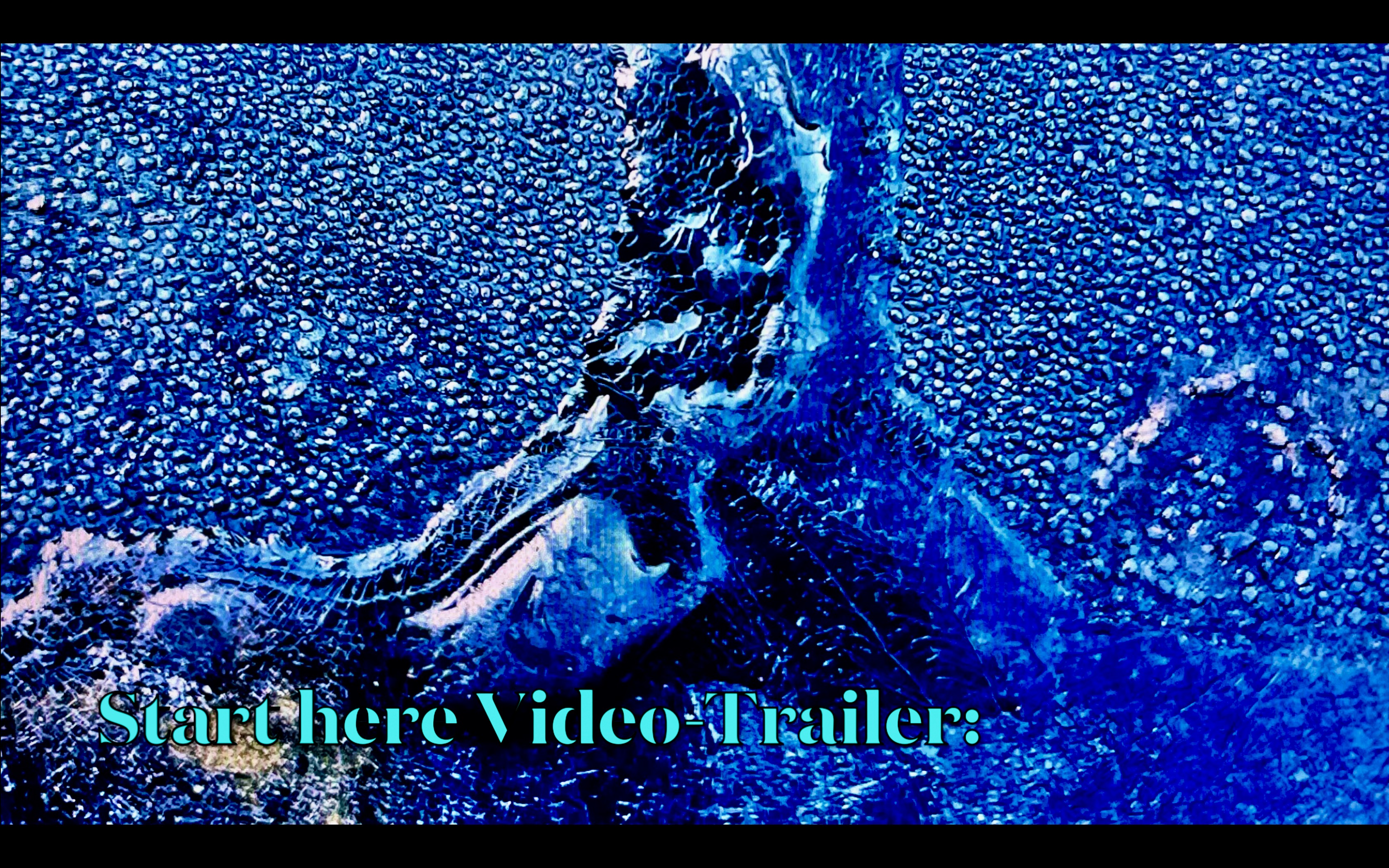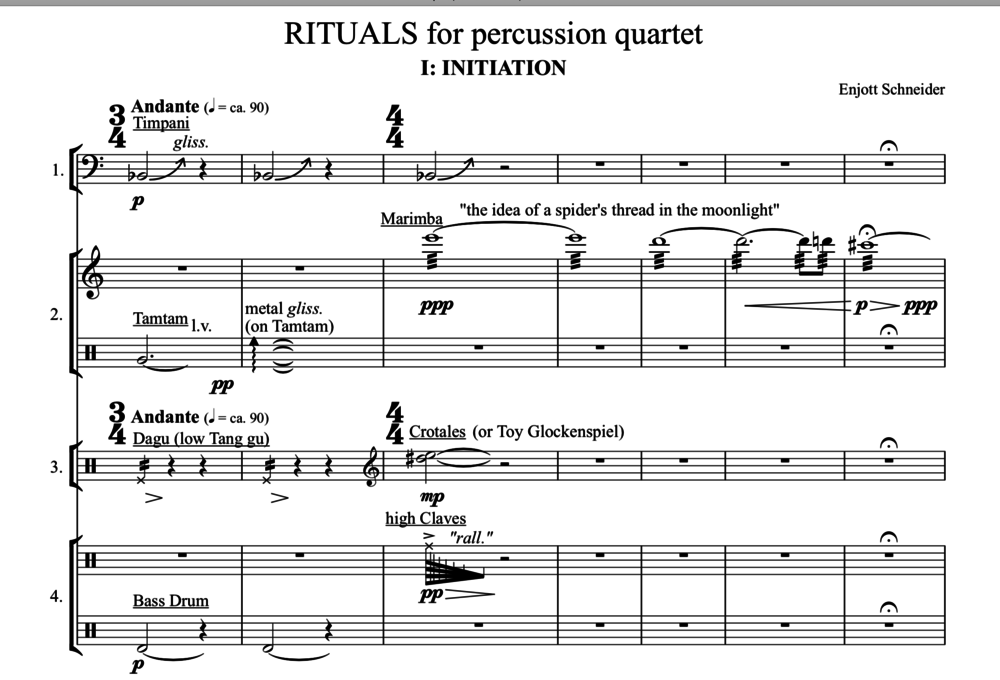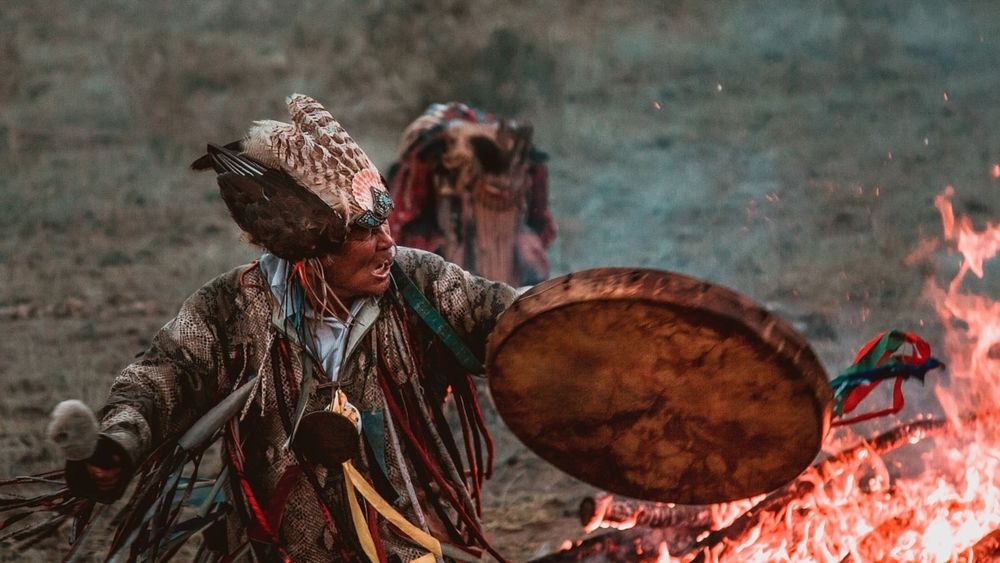
Update Required
To play the media you will need to either update your browser to a recent version or update your Flash plugin.
















Category: Chamber Music
In three abstract ceremonies, RITUALS thematises gestural primordial states that run according to predefined rules. Formulaic and repetitive moments dominate the ritualised actions.
The first movement is about the archetype of "beginning". The 2nd movement revolves around the archetypal phenomenon of "wind", which is encountered in a multifaceted ritual of imitation.
In the third movement, the numbers 3 and 4 are ritualised in formulaic, repeated gestures. In all cultures, the "three" with its vector pointing to the future or the transcendent is highly charged with religious symbolism and refers to the divine. The "four" stands for real matter (four cardinal points, four tastes, four 90-degree angles that constitute the circle or square. The sacred number 12 consisting of 3x4 is encountered in religions and mythologies.
Movements: RITUALS for Percussion Quartet
1: Initiation
2: Song of the wind
2: Ritual 3+4=12
Duration: 17 Minutes
Publisher of notes/sheet music: Ries & Erler Musikverlag Berlin , 2021
Instrumentation: Percussion 1:
Marimba (A-c4), Hihat, Triangle (middle), 2 Timpani (A – d#), Holzbrett (20x60 cm), Tamtam (shared with Perc.2), Gong (low), 2 Stones, 6 glasses tuned in A, Bb, C, D, D#. E, F, G#
Percussion 2:
Marimba (A-c4), 2 suspended cymbals (large-small), 3 Triangles (high, middle, low), snare drum, Tamtam (shared with Perc.1), a plastic hose
Percussion 3:
Vibraphone (f-C3), 2 Tanggu / Chinese drums (low, middle), 4 woodblocks, crotales (13 notes), Waterphone, tubular bells A, Bb, C, D#. f, G#, a plastic hose, a long rainmaker
Percussion 4:
Large Bass Drum, 2 asian toms (or Congas), Kinderglockenspiel, Triangle (middle), bell tambourin, 2 claves, 3 suspended cymbals (large-middle-small), metal chimes, a plastic hose
Introduction: In three abstract ceremonies, RITUALS thematises gestural primordial states that run according to predefined rules. Formulaic and repetitive moments dominate the ritualised modes of action. RITUALES from 2021 is a new composition of an older work "UR-KULTUR 1", which was performed by Peter Sadlo and his quartet at the Schleswig Holstein Music Festival on 8 August 1988.
The first movement is about the archetype of "beginning": a pattern develops from the first still irritating impulses, which in the musical sense is the successive crystallisation of a sequence of notes A, Bb, C, d#, f, g#. In the main motoric section, "Allegro molto", only rhythmic, tonal and timbral fragments can be heard incoherently at first, but they become denser and more and more meaningful - the ritual of the beginning.
The 2nd movement revolves around the primordial phenomenon of "wind", which is encountered in a multifaceted ritual of imitation.
In the third movement, the numbers 3 and 4 are ritualised in formulaic, repeated gestures. In all cultures, the "three" with its vector pointing to the future or the transcendent is highly charged with religious symbolism and refers to the divine. The "four" stands for real matter (four cardinal points, four tastes, four 90-degree angles that constitute the circle or square. The sacred number 12 consisting of 3x4 is encountered in religions and mythologies: The college of gods of the Greeks as well as the Nordic-Germanic mythologies comprised 12 gods. In the Bible we find the 12 tribes of Israel; King Solomon as well as the mystical Mary of the Apocalypse had 12 stars in their crown, 12 bulls or rams were sacrificed. Our Western zodiac, which originated in Mesopotamia, as well as the Chinese Zodiac contain 12 animal images. The 12 is also omnipresent in physics and natural sciences - think of the cosmos of 12 tones in acoustics or the basal dodecahedron in geometry. Time", for example, is the result of a connection between space (matter) and the beyond (the divine), from which the division of the day into 12 hours or the year into 12 months is derived.
Dedication: Cordially dedicated to Stefan Blum
World premiere: 16.06.2021, Straubinger Musiktage 2021
Performers at world premiere: Straubinger Musiktage 2021 16th of June with Percussion Quartet Stefan Blum


















